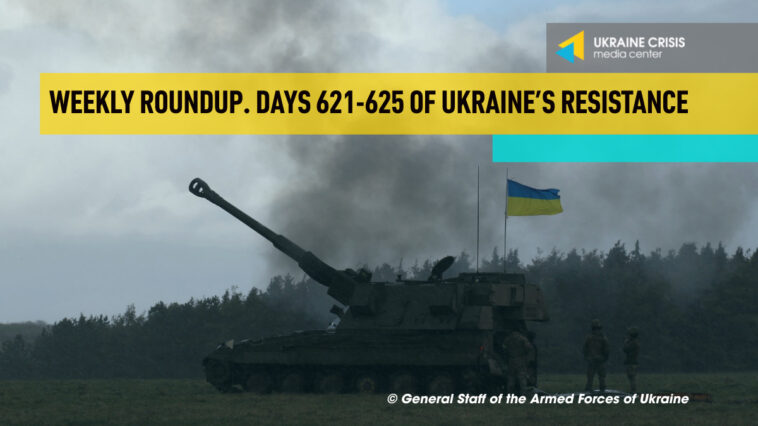This week, fighting has continued all along the front lines. Russia also continued to target Ukraine with missiles and drones. After weeks of relative calm, Russia struck Odesa, hitting the central part of the city and its port infrastructure. Ahead of the anticipated Russian strike campaign against Ukraine’s energy infrastructure, the country is preparing “for the worst winter in history,” Ukraine’s Foreign Minister Dmytro Kuleba said in an interview with Die Welt.
NATO allies froze participation in the Treaty on Conventional Armed Forces in Europe after Russia’s pullout.
Ukraine is relying on support from allies to strengthen its capabilities. This week, it has deployed additional NASAMS air defense systems, President Zelenskyi said. On Thursday, a HIMARS missile strike killed senior Russian officers in Russian-occupied Skadovsk.
On Wednesday, the European Commission recommended opening membership talks with Ukraine, marking a historic decision for the country.
Ukrainian troops cut Oleshky-Nova Kakhovka road, ISW says. Ukrainian troops have cut the Oleshky-Nova Kakhovka road (53km northeast of Kherson) in at least two areas, the Institute for the Study of War (ISW) said, citing Ukrainian military observer Konstyantyn Mashovets. Mashovets also stated that Ukrainian forces have established continuous control of positions from the Antonivsky railway bridge north of Poyma to the Antonivsky roadway bridge north of Oleshky (7km south of Kherson and 4km from the Dnipro River) as of November 9.
Russian milbloggers claimed on November 9 that Ukrainian forces established control over new positions in Krynky (30km northeast of Kherson City and 2km from the Dnipro River) and conducted assaults towards Russian positions south and southwest of the settlement.




